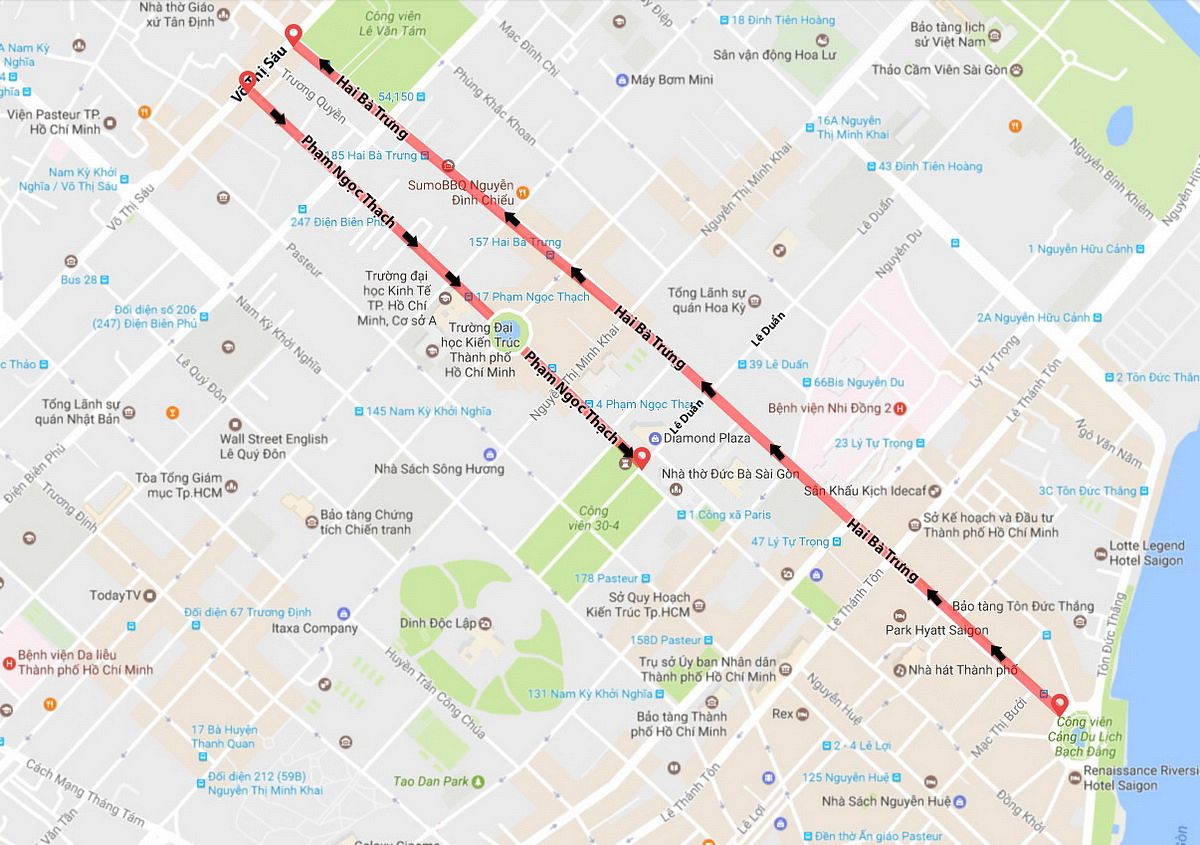A plan by Saigon authorities to make the city motorbike-free by 2030 is getting closer to becoming a reality.
Recently, the Ho Chi Minh City Department of Transport submitted to the People’s Committee a preliminary proposal detailing how it aims to control traffic and manage public transportation in the future, reports Zing.
The project will be divided into three main phases, with the most prominent change to the local road system being a complete ban on motorbikes by 2030. During the first phase, which will take place from now until 2020, the city will limit bikes on Truong Son and Nguyen Thi Minh Khai streets during peak hours.
From 7am to 7pm, a bike limit will also be imposed on Pasteur Street (the section from Ly Tu Trong to Dien Bien Phu streets) and Nam Ky Khoi Nghia Street (the section from Dien Bien Phu to Ly Tu Trong streets).
The second phase will last 2021–2025 and will curtail bike access to District 1 via main thoroughfares like Vo Van Kiet, Dinh Tien Hoang, Dien Bien Phu, Hai Ba Trung, Nguyen Thi Minh Khai and Nguyen Van Cu.
From 2026 to 2030, which is the last phase, a complete ban on bikes will be gradually implemented. Motorbikes will be prohibited from entering Districts 1, 3, 5 and 10 through streets including Vo Van Kiet, Chau Van Liem, Hong Bang, Ly Thuong Kiet, Bac Hai, Cach Mang Thang Tam, Vo Thi Sau, Dinh Tien Hoang and Ton Duc Thang.
As of now, motorbikes remain the major mode of transport for most Saigoneers, so the bike ban might wreak havoc on daily Saigon life if other alternatives are not installed in time. On average, there are 910 motorbikes per 1,000 residents in Saigon. According to statistics from the HCMC Department of Transport, as of March 2018, the metropolis’ vehicle registry includes 7.3 million bikes and 640,000 cars. Local streets are also accommodating around one million bikes from nearby provinces.
The Hanoi-based Transport and Development Strategy Institute suggests that — while waiting for the Saigon Metro to finish — the city should expand its bus system to shoulder part of the commuting needs caused by the impending ban.
Specifically, Saigon should open 55 to 120 more bus lines — for a total of 192–255 lines — with 4,200 to 4,800 buses to serve local commuters. This could satisfy 8.9% to 12.2% of the city’s transportation needs and 25% to 30% of the downtown demand.
If the new proposal is approved, then 2030 will be a radical year for drivers in both Saigon and Hanoi, with both cities aiming to impose a complete ban on motorbikes by that time. Hanoi authorities officially greenlit the ban in August last year.















